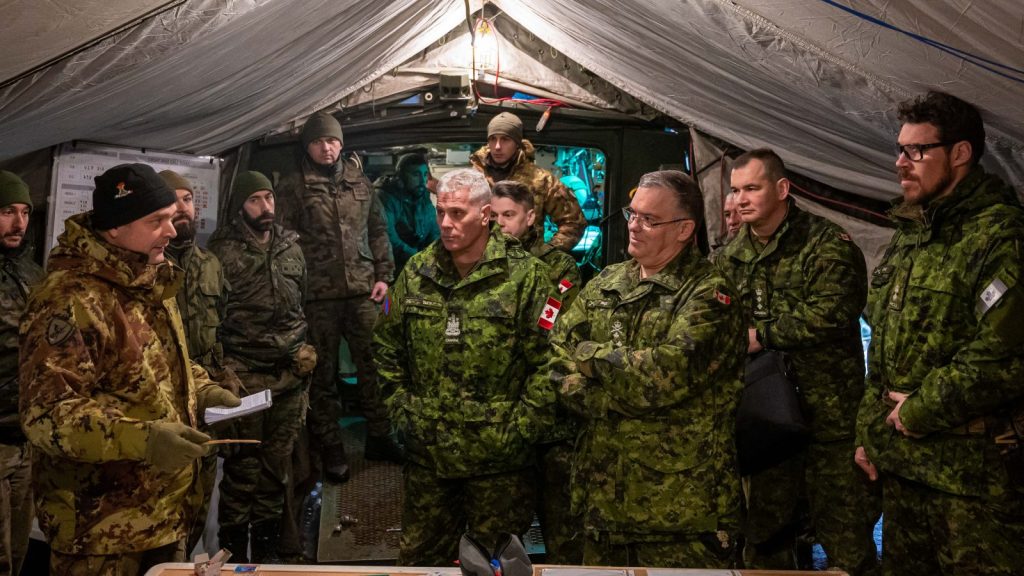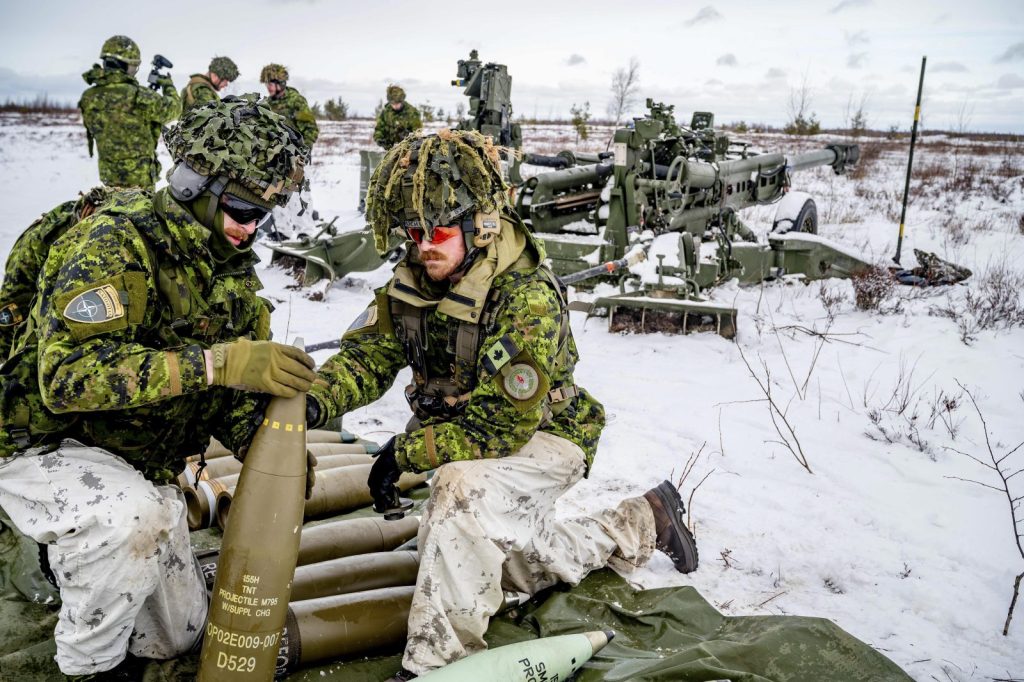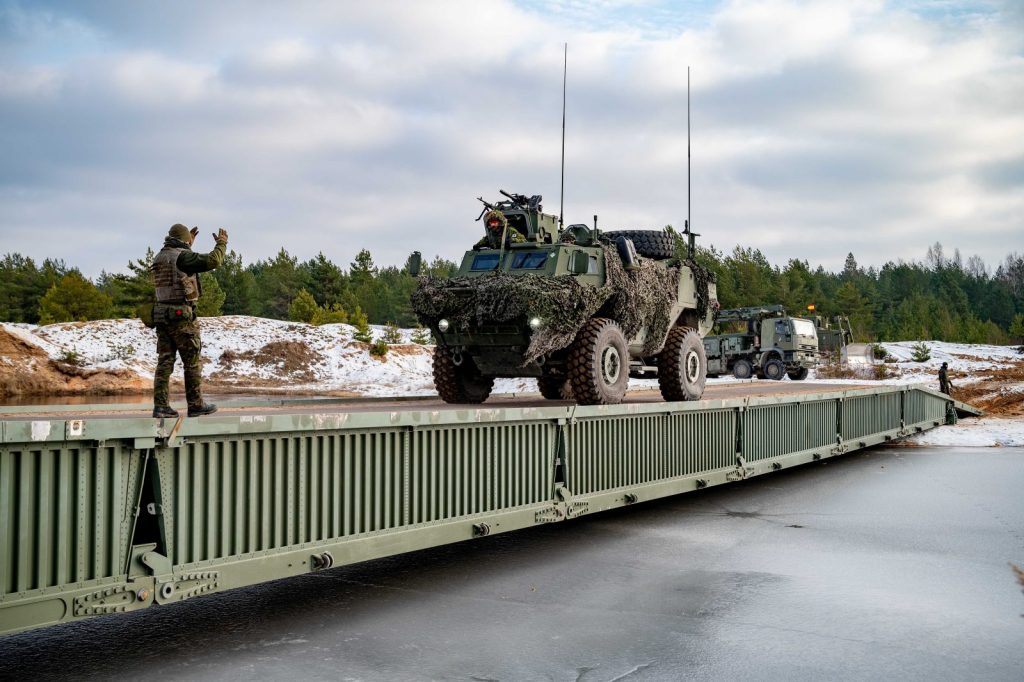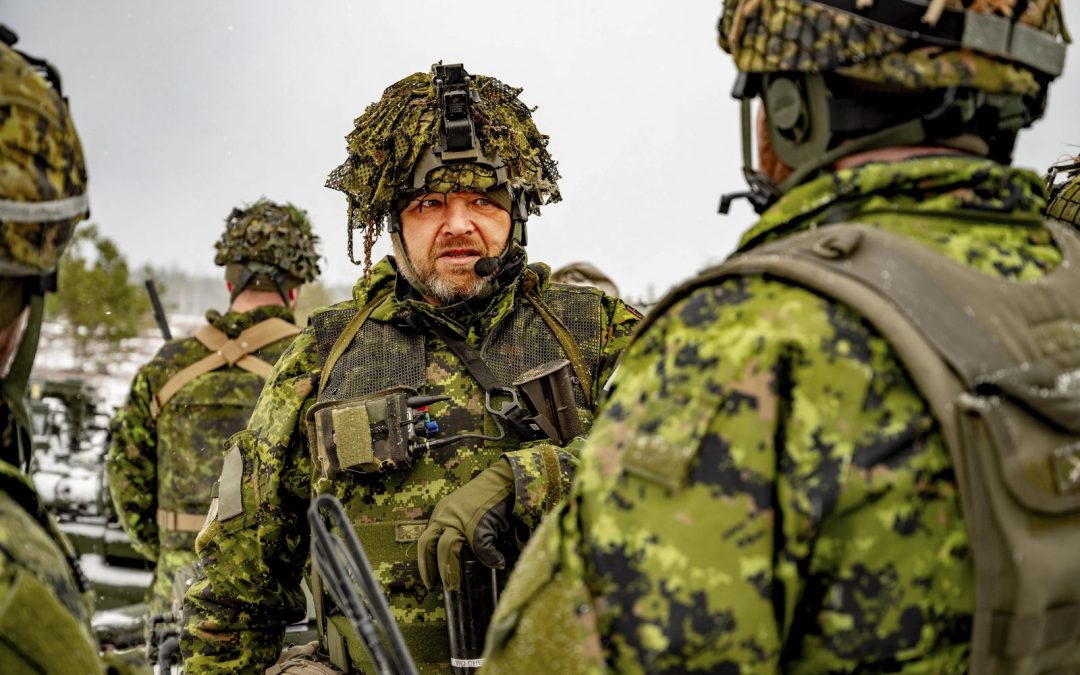by Chris Thatcher
There’s a fine art to force generating a multinational battle group. Partner nations are often occupied with their own national priorities and grappling with the limitations of their defence budgets, so building combat capability requires some armour from one, artillery from another, and engineers and a few enablers from a third.
Consequently, scaling that force to a full-strength brigade is no small task.
Last June, Canada confirmed a commitment to continue its role as a framework nation for NATO’s enhanced Forward Presence (eFP) Battle Group in Latvia. It also agreed to work with allies to generate and stage the necessary forces to surge that formation to a combat capable brigade, leading a headquarters element and contributing capabilities like air defence systems and anti-tank weapons.
The full extent of what the Canadian Army might contribute is still being defined. The Canadian government and Armed Forces must initially get partner nations onboard, and then earmark funding and determine Army capacity as it reconstitutes the force.
But the job of sussing out the specifics of what partner nations might be able to send and then force-generating that larger formation over the longer term falls to Task Force Latvia Headquarters.
Since NATO stood up the four multinational battalion-sized battle groups in Estonia, Latvia, Lithuania and Poland in 2017, Task Force Latvia has worked with the host Latvian mechanized infantry brigade and the sending partners, which now include Albania, the Czech Republic, Iceland, Italy, Montenegro, North Macedonia, Poland, Slovakia, Slovenia and Spain, to generate a deterrence force to any Russian aggression.
“We build the battle group, and we hand that over to NATO once it is formed,” explained Colonel Vince Kirstein, the task force commander. “My headquarters makes sure all the pieces are there and we deal with Latvia to make sure we have all the infrastructure, all the support that we need from them as the host nation.”
NATO sets minimum capability requirements for each battle group, but there is no universal standard or composition. While that might make the task of building a brigade a little easier — Kirstein will not have to follow the same formula or find the same combat units as the British in Estonia, the Germans in Lithuania, or the Americans in Poland — generating the necessary numbers could nonetheless be a challenge. After Russia invaded Ukraine last February, NATO members agreed to establish four more multinational battle groups in Bulgaria, Hungary, Romania and Slovakia.
“That has changed some of the calculus,” Kirstein admitted. “Some of the contributing nations to our battle group are now framework nations or host nations for those eFP battle groups.”
Furthermore, NATO has since decided to scale all eight battle groups to brigade strength.
“That is a whole lot of troops that are going to be required for all of that,” the armoured officer with the Lord Strathcona’s Horse (Royal Canadians) noted. “We are working with the sending nations we currently have, but we are also looking to other folks, particularly in this region, that may be interested in contributing. We anticipate there will be a bit more of a regional outlook by member states because now they are going to be moving a lot more pieces and it’s easier to do closer to home.”

Army Commander, LGen Jocelyn Paul, and the Army Sergeant Major, CWO James Smith, receive a brief from the battle group headquarters in Latvia alongside battle group commanding officer, LCol Craig Higgins (far right). Photo: CAF
“The eFP battle groups all fulfill the same function, but they all look slightly different, depending on which country has the lead and which countries are contributing,” observed Lieutenant-Colonel Craig Higgins, commanding officer of the battle group in Latvia, currently comprised of a team mostly drawn from the 1st Battalion, Princess Patricia’s Canadian Light Infantry (PPCLI). “My assumption would be that the brigades will take a similar approach. None will look exactly the same doctrinally, but they’ll provide the same function.”
The task force knows which countries have what capability, and is targeting its requests. But if specific capabilities prove difficult to find, Canada, as the framework nation, could be on the hook to fill any gaps, a fact acknowledged by the Army Commander Lieutenant-General Jocelyn Paul in an interview last fall.
“We are still figuring out exactly what we are going to be able to do,” said Kirstein, noting the role of contributing nations and federal government funding. But as the lead nation, “you can’t just be the headquarters and not provide any of the troops.”
“That debate is all happening in the background right now,” he added. “But looking at this from the perspective of the guy who has got to build it, we are really trying to make sure we have the right force mix given the terrain we are dealing with here. Latvia has different terrain than, say, Poland. The threat is different as well. All of that is being taken into account to ensure we have a combat capable force.”
After 12 rotations, the battle group has well-established standard operating procedures and a solid sustainment plan, so scaling to a brigade will be more about expanding what is in theatre rather than creating new practices or capabilities, he said.
The battle group is fully embedded within the Latvian brigade, so the brigade’s operational and logistics structure is at least partially in place, said Higgins, an infantry officer. Core functions like command and control, coordination of artillery, air defence, engineering capabilities and sustainment are already in place.
“All those will continue to function in parallel while the multinational brigade gets stood up. At a certain point, those capabilities will be built up or mature enough that we would switch to being supported by a new structure,” he said.

Members of the Royal Canadian Artillery on a live fire exercise as part of Exercise Wolverine Shield/Strike in Latvia in March 2023. Photo: CAF
Over the next 18 months, the Army will aim to fill at least three capability gaps in its current inventory: portable anti-X missiles (PAXM), very short-range air defence (VSHORAD) and counter uncrewed aerial systems (CUAS). The three have been deemed urgent operational requirements that “would inherently be required in a brigade,” Kirstein noted. CUAS would typically be a division level asset, but could be plugged in to help a brigade defend itself.
The Canadian PAXM and VSHORAD systems would augment what is already provided by other members of the battle group, Higgins confirmed. But functions like air defence coordination, which does not currently exist but would be a necessary part of a brigade construct, “those would likely come in as the brigade is stood up and developed. It’s just a matter of when they come in, and what structures here they might be able to plug into until a brigade is fully fleshed out.”
Some systems like additional PAXM would be straightforward to integrate, “because they’re pretty much point and shoot technologies,” he added. But others might “require national level direction as they need places to house them, technicians to maintain them.”
It’s not yet clear whether the brigade would require Canadian tanks. At present, Poland, Spain and Italy have tank companies in the battle group, but Spain is slated to become a framework nation for one of the new battle groups.
“I would love to see Canadian tanks here,” said Kirstein, who deployed with the Leopard tank to Afghanistan in 2007 as part of the 3e Battalion, Royal 22e Régiment and served as commandant of the Royal Canadian Armoured Corps School from 2017 to 2019. “This is where we are going to need them if we need them.”
Beyond the challenge of “figuring out who is providing what” to a brigade, Task Force Latvia must also address issues with infrastructure and training facilities. Currently, Latvia does not have the facilities to house and feed an entire brigade, maintain vehicles, or securely store large quantities of ammunition. The task force headquarters is working closely with the Latvian government and military on new building specifications and other details to “make sure that what they are doing aligns with what we need and can happen in the order we need it to,” Kirstein said.
Brigades require a lot of ammunition, so pre-positioning ammo in the requisite storage “is going to be key to the combat capability of this brigade,” he added.
So, too, is a larger training area. For units used to collective training on the vast ranges of Wainwright and Gagetown, the average range in the Baltics is about seven kilometres by 12 kilometres and is already a challenging space for a battle group.
“That is arguably the most critical piece,” said Kirstein, and the Latvian military is looking to secure an additional base.

Conducting a wet gap crossing with assistance from Spanish engineers during Exercise Wolverine Forge in Latvia in February 2023. Photo: SSgt Christian Milano, Spanish Army
The battle group recently completed Wolverine Forge, an exercise of command and control at the company level, and Wolverine Strike/Shield, an exercise of the battle group’s sub-unit defensive and offensive operations, and was about to launch into Exercise Crystal Arrow 2023, a NATO combat readiness evaluation. Higgins acknowledged the challenges of the training areas and suggested that could be a limiting factor, initially, for the brigade until new infrastructure and training facilities are in place.
“This is one of those things where we want to balance our appetite,” he said. “You could surge everything here and put it under tents, but can you sustain it? On paper it might look fairly easy for any nation to just take a brigade group and chunk it down here, but how do you keep that functioning in an efficient way, for the long term? It’s that balance between getting more fighting power with what’s behind that. That’s where a lot of the discussion and analysis that I’ve seen has been going on.”
Just how quickly the battle group needs to evolve to brigade strength will be predicated somewhat by Russian activity over the border. “This is all threat dependent,” Kirstein acknowledged. “If we were to have the understanding that Russia had any indication of threatening Latvia, then we would already be moving pieces over here. But we’re not there yet and it means we’ve got some time. How much remains to be seen.”
Higgins, who also spent 13 years with Canadian Special Operations Forces before rejoining the Army in 2019, cautioned that while experts might argue Russia has depleted a lot of its force and remains preoccupied with Ukraine, “they have the ability to influence this area of operations with rockets and missiles, drones and aircraft, almost instantaneously, if they want to. We operate under the assumption that if we need to respond and fight tonight, we’re able to do that.”
For Ex Crystal Arrow, which will likely see the entire battle group deployed and tested in some capacity, the NATO validation of capability has not changed despite Russia’s invasion of Ukraine. “While Russian actions have changed, the way [we] would operate tactically hasn’t fundamentally changed,” said Higgins. “The way we run the current exercise is not vastly different than previously.”
Kirstein served as the deputy commander of the Latvian Mechanized Infantry Brigade from 2019 to 2021 and has used that close relationship to remain in almost daily contact with the brigade commander and senior leadership. The evolution of the Canadian-led battle group to a brigade would change the command structure, but not the effectiveness of the two formations, he suggested.
“In the long run, we should end up with a command structure that makes more sense tactically, which isn’t something we have had to worry about as part of the Latvian brigade — we went wherever the brigade went,” he said. “Now, we have the opportunity to separate those two and divide Latvia so that the two brigades can fight separately, but very closely coordinated.”
In February, LGen Paul visited NATO partners in Europe and the battle group. Though the tour included time with soldiers, it was also about understanding the conditions on the ground and drumming up support to augment the brigade.
“What we are trying to do is generate, from a Canadian perspective, something that is going to be sustainable,” said Kirstein. “Regardless of how the fight in Ukraine progresses, there will still be requirements for commitments here, and it could be for a while. Canada is committed to Latvia and until the threat goes away, we will remain committed. So, for the Army commander, that means we have to have a construct we can support without breaking the Army or it is not a viable option.”

